
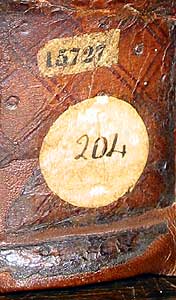
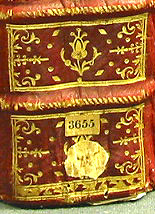

Phillipps books are marked in a number of distinctive ways:
You can usually recognise a Phillipps manuscript before you even take it of the shelf: they usually have the remains of a small rectangular paper label printed with the Phillipps number, which is usually four or five digits:




Beneath the Phillipps label in the first three examples are the remains of round paper labels with lot numbers from an auction.
A stencilled crest, with "Sir T. P. / Middle Hill", is occasionally found, with the manuscript number added by hand below. It seems that as his rate of acquisition increased, he abandoned the use of the crest, perhaps because its application was too time-consuming when there were hundreds or thouands of books to mark.
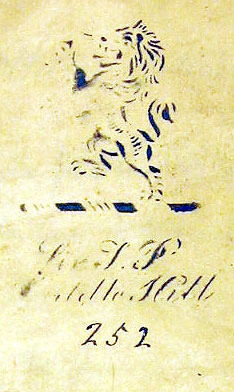

Sometimes there is a hand-written note on a flyleaf or the first page of the text:
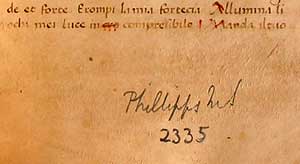
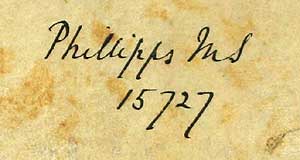
Sometimes the number comes before, and sometimes after the "Phillipps MS" or the "Ph. MSS", and sometimes "Ph" or "Phillipps" are omitted altogether:
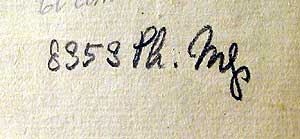
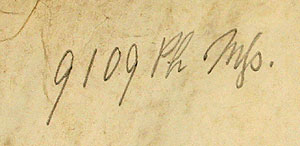

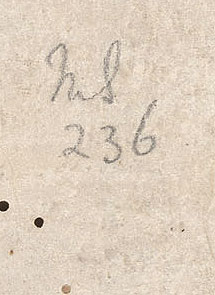
Sometimes manuscripts were mis-numbered or deliberately re-numbered, and in such cases more than one number can occurs:
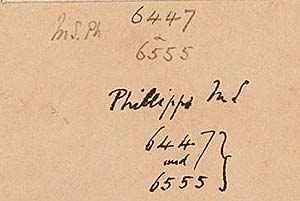
Sometimes the letters "MHC" (Middle Hill Catalogue) also appear.

Often there will also be a pencilled number, apparently added considerably later, which might be a shelfmark:


Phillipps manuscripts can often be recognised by the cheap 'Middle Hill boards' used to bind them. Sometimes they will bear the ticket of the binder, such as the long-suffering Bretherton:
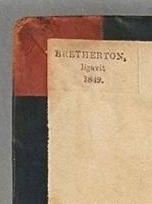
de Ricci, p. 126
After Phillipps's death, the collection was inherited by his grandson, Thomas Fitzroy Fenwick. He left his initials and the date in a number of manuscripts to record that he had examined them, usually in the top corner of the back pastedown or the final flyleaf:

Phillipps amassed a considerable number of leaves and fragments. Those that were still in the collectionin the 1940s were acquired by William H. Robinson Ltd., London, and sorted by Ralph Lewis, who wrote an opinion of their date in pencil in easily recognisable handwriting, and a valuation (usually erased); those that passed through the hands of Bernard Rosenthal usually also have an encircled number:




